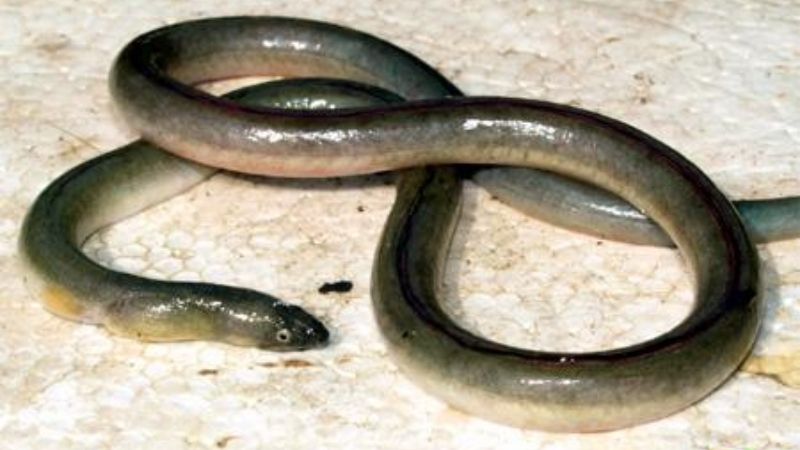For homemakers who have trouble distinguishing between the eel and the swamp eel, this article aims to provide clarity and answer your questions.
1 What is a Swamp Eel?
The swamp eel, with the scientific name synbranchidae, is a hermaphrodite species of fish commonly found in brackish and freshwater environments. They lack pectoral and ventral fins and breathe through their skin and gills. Swamp eels are typically found in brackish and freshwater habitats such as rice fields, ponds, canals, swamps, and estuaries.
 What is a Swamp Eel?
What is a Swamp Eel?
2 How to Differentiate Between Swamp Eels and Eels
While they may appear similar, there are some key differences to note between swamp eels and eels:
Habitat
Swamp eels predominantly inhabit brackish and freshwater environments, including rice fields, ponds, canals, estuaries, and swamps. In contrast, eels are strictly freshwater dwellers.
 Swamp eels inhabit brackish and freshwater environments, while eels live in freshwater habitats only.
Swamp eels inhabit brackish and freshwater environments, while eels live in freshwater habitats only.
Coloration
The coloration of both swamp eels and eels is influenced by their environment. Their skin is sensitive and adapts to match the surroundings, including the region, soil, and water sources. As a result, their color can vary.
However, common colors for both species include black, brown, and yellow.
 Both swamp eels and eels can be black, brown, or yellow.
Both swamp eels and eels can be black, brown, or yellow.
Skin
Swamp eels have thinner skin that is coated in a mucous layer, while eels have thicker skin with less mucus, making them easier to grasp.
Body Shape
Eels have a flat body shape with a pointed tail, resembling a triangle. Adult eels typically grow to a length of 40-80 cm and weigh between 180-800 grams.
On the other hand, swamp eels have a round body, with a flat tail that is more developed than that of an eel. Their eyes and nose protrude more than those of eels. Adult swamp eels reach a length of approximately 60 cm and weigh around 160 grams. Due to their smaller size, their meat tends to be softer than that of eels.
 Eels have a flat, triangular body shape, while swamp eels have a round body with a flat tail.
Eels have a flat, triangular body shape, while swamp eels have a round body with a flat tail.
Price
During the breeding season, from March to November, and at other times, the price of eels tends to be higher than that of swamp eels. Currently, eel prices range from 200,000 to 280,000 VND per kilogram, while swamp eel prices vary from 60,000 to 120,000 VND per kilogram, depending on the season.
3 Important Considerations When Consuming Swamp Eels and Eels
 Important considerations when consuming swamp eels and eels.
Important considerations when consuming swamp eels and eels.
Gout Patients Should Avoid Eating Swamp Eels and Eels
Gout is a metabolic disorder characterized by high levels of uric acid in the blood, often caused by excessive protein consumption. As swamp eels and eels are rich in protein, individuals with gout should refrain from consuming them to prevent exacerbating their condition.
Avoid Combining with Cooling Foods
After eating swamp eels or eels, avoid consuming cooling foods such as watermelon, shrimp, crab, or banana, as this combination can lead to food poisoning.
Thorough Cooking is Essential
Swamp eels and eels are omnivores that inhabit environments rich in bacteria, such as swamps and rice fields. Therefore, it is crucial to cook them thoroughly to eliminate any potential parasites or harmful bacteria.
We hope that this article has helped clarify the differences between swamp eels and eels. Stay tuned for more informative content!






































